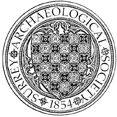Betchworth
Excavation by D W Williams in the partly demolished 17th century barn adjacent to the parish church. In the northern half of the excavation was a deep feature over 5m wide, probably a former watercourse, with a fill of several layers: firstly 1m of silt with a few struck flakes, then the articulated but headless remains of an ox, then silt with 11th/12th century pottery and bone, then layers of debris including a 13th century roof tile dump. All were cut by a pit or ditch roughly revetted with flint, stone and tile and having roof tile in its fill.


